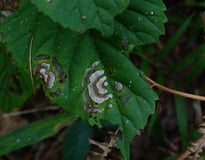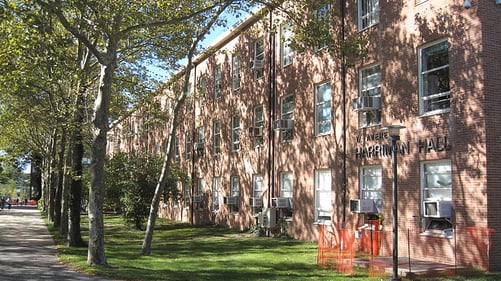 Getting a fungal infection is a part of life, that everyone experiences at one time or another. These types of infections range in seriousness, from athlete's foot to ringworm to histoplasmosis. Although commonly fatal, more than 1.3 million people contract fatal fungal infections each year. Currently, there are three known antifungal drugs available to fight these infections, though they are not always the most effective. (Image courtesy of L. Shyamal via Wikimedia Commons)
Getting a fungal infection is a part of life, that everyone experiences at one time or another. These types of infections range in seriousness, from athlete's foot to ringworm to histoplasmosis. Although commonly fatal, more than 1.3 million people contract fatal fungal infections each year. Currently, there are three known antifungal drugs available to fight these infections, though they are not always the most effective. (Image courtesy of L. Shyamal via Wikimedia Commons)
Researchers from Stony Brook University in New York have discovered a new antifungal agent, unfolding a forth potential drug to fight these fatal infections.
While discussing the current drugs available, lead Stony Brook University researcher on this project, Dr. Maurizio Del Poeta explained that "the drugs don't work that well. They are toxic, so they affect other organs, and they are static, meaning they may be able to stop a fungus from replicating but they are not able to kill the fungus."
Through previous research scientists have learned that fungal cells missing the lipid glucosylceramide (GlcCer) are unable to replicate, so the current Stony Brook research team kept this in mind while searching for potential new agents that would rid fungal cells, but not mammalian cells, of this lipid. They found that the compounds BHBM and DO were efficient in decreasing only fungal GlcCer levels.
|
RELATED ARTICLES: |
Once learning the ability these two compounds had at reducing GlcCer levels, the Stony Brook research team used test tube and animal models to test the effectiveness of reducing GlcCer in these two different models, and found that they were in fact effective at fighting off fungal infections in both models.
"The enzymes that are important for the synthesis of fungal glucosylceramide are different than the ones important for the synthesis of mammalian glucosylceramide," Dr. Del Poeta explained. "We thought that because the pathway is totally different, we could specifically target the fungal glucosylceramide without affecting mammalian , and that is exactly what we did."
Over the next five years, further compounds will be examined to determine their effectiveness in reducing GlcCer, and all of these, together with BHBM and DO could eventually be used to create new antifungal drugs with the intention of lowering the mortality rate from severe fungal infections.

Image of Stony Brook University courtesy of Wikimedia Commons
Stony Brook University is one of the most well-funded and top research universities in the country. In the 2013 fiscal year, Stony Brook had a total R&D expenditure of more than $97.8 million. Currently, the institution has nearly $50 million in active funding from the NIH and it's associated organizations. This current funding is being used for research projects including:
- Stony Brook University recently received $60 million in new funding to build a state-of-the-art Innovation and Discovery Center on its Research and Development Park campus.
- Stony Brook University received $4 million in donations toward Advancing Cardiac Imaging and wellness.
- $3.8 million was awarded to a Stony Brook University team of researchers, so that they can develop new drugs for pain, inflammation and possible drug addiction.

With so much in research funding helping to support a vast range of life science projects, Stony Brook University is a thriving marketplace for companies looking to market their lab supplies and technologies. Biotechnology Calendar, Inc. holds an annual event that helps bring researchers and lab suppliers together, in one place, to discuss the newest tools and technologies available for use in labs.
The 10th Annual BioResearch Product Faire™ Event at Stony Brook University, coming up on September 28, 2015 provides lab suppliers with the opportunity to meet face-to-face with active and well-funded life scientists, eager to learn about new products available to further their lab work.
To learn more about participating in the Stony Brook University Event, visit the link below.
Interested in learning more about Biotechnology Calendar, Inc.? View the following short video for more information.


